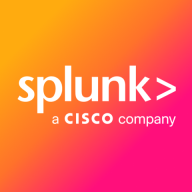

Splunk Observability Cloud and LM Envision compete in the observability and monitoring space. LM Envision appears to have the upper hand due to its extensive features.
Features: Splunk Observability Cloud includes real-time monitoring, alerting, and advanced analytics. LM Envision offers comprehensive monitoring, extensive customization, and integration options.
Ease of Deployment and Customer Service: LM Envision is recognized for its straightforward deployment model and responsive customer service. Splunk Observability Cloud has a flexible deployment but might require more initial configuration.
Pricing and ROI: Splunk Observability Cloud presents a competitive pricing model with potential substantial ROI through its analytics capabilities. LM Envision, while possibly higher in initial setup costs, promises significant ROI due to its extensive feature set.

LM Envision is a powerful software that helps businesses analyze and optimize their operations.
With its comprehensive data analysis capabilities, intuitive user interface, and efficient project management tools, users can gain valuable insights into their processes and make data-driven decisions.
It also allows for monitoring and tracking key performance indicators, enhancing productivity, and driving overall business growth.
Splunk Observability Cloud offers sophisticated log searching, data integration, and customizable dashboards. With rapid deployment and ease of use, this cloud service enhances monitoring capabilities across IT infrastructures for comprehensive end-to-end visibility.
Focused on enhancing performance management and security, Splunk Observability Cloud supports environments through its data visualization and analysis tools. Users appreciate its robust application performance monitoring and troubleshooting insights. However, improvements in integrations, interface customization, scalability, and automation are needed. Users find value in its capabilities for infrastructure and network monitoring, as well as log analytics, albeit cost considerations and better documentation are desired. Enhancements in real-time monitoring and network protection are also noted as areas for development.
What are the key features?In industries, Splunk Observability Cloud is implemented for security management by analyzing logs from detection systems, offering real-time alerts and troubleshooting for cloud-native applications. It is leveraged for machine data analysis, improving infrastructure visibility and supporting network and application performance management efforts.
We monitor all IT Infrastructure Monitoring reviews to prevent fraudulent reviews and keep review quality high. We do not post reviews by company employees or direct competitors. We validate each review for authenticity via cross-reference with LinkedIn, and personal follow-up with the reviewer when necessary.